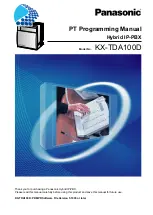
AXIS P1445-LE-3 License Plate Verifier Kit
The device interface
Illumination angle
: Use the slider to manually set the illumination angle, for example if the angle needs to be different
from the camera’s angle of view. If the camera has a wide angle of view, you can set the illumination angle to a narrower angle,
which equals a greater tele position. This will result in dark corners in the image.
IR wavelength
: Select the desired wavelength for the IR light.
White light
Allow illumination
: Turn on to let the camera use white light in night mode.
Synchronize illumination
: Turn on to automatically synchronize the white light with the surrounding light.
Exposure
Exposure mode
: Select an exposure mode to reduce rapidly changing irregular effects in the image, for example flicker produced
by different types of light sources. We recommend you to use the automatic exposure mode, or the same frequency as your
power network.
•
Automatic
: The camera adjusts the aperture, gain and shutter automatically.
•
Automatic aperture
: The camera adjusts the aperture and gain automatically. The shutter is fixed.
•
Automatic shutter
: The camera adjusts the shutter and gain automatically. The aperture is fixed.
•
Hold current
: Locks the current exposure settings.
•
Flicker-free
: The camera adjusts the aperture and gain automatically, and uses only the following shutter
speeds: 1/50 s (50 Hz) and 1/60 s (60 Hz).
•
Flicker-free 50 Hz
: The camera adjusts the aperture and gain automatically, and uses the shutter speed 1/50 s.
•
Flicker-free 60 Hz
: The camera adjusts the aperture and gain automatically, and uses the shutter speed 1/60 s.
•
Flicker-reduced
: This is the same as flicker-free, but the camera might use shutter speeds faster than
1/100 s (50 Hz) and 1/120 s (60 Hz) for brighter scenes.
•
Flicker-reduced 50 Hz
: This is the same as flicker-free, but the camera might use shutter speeds faster
than 1/100 s for brighter scenes.
•
Flicker-reduced 60 Hz
: This is the same as flicker-free, but the camera might use shutter speeds faster
than 1/120 s for brighter scenes.
•
Manual
: The aperture, gain and shutter are fixed.
Exposure zone
: The exposure zone tells the camera to prioritize image quality in the most important part of the scene. Select the
part of the scene of greatest interest to calculate the automatic exposure levels, for example the area in front of an entrance door.
Note
The exposure zones are related to the original image (un-rotated), and the names of the zones apply to the original image.
This means, for example, that if the video stream is rotated 90°, then the
Upper
zone becomes the
Right
zone in the
stream, and
Left
becomes
Lower
.
•
Automatic
: Suitable for most situations.
•
Center
: Uses a fixed area in the center of the image to calculate the exposure. The area has a fixed size and
position in the live view.
32
















































